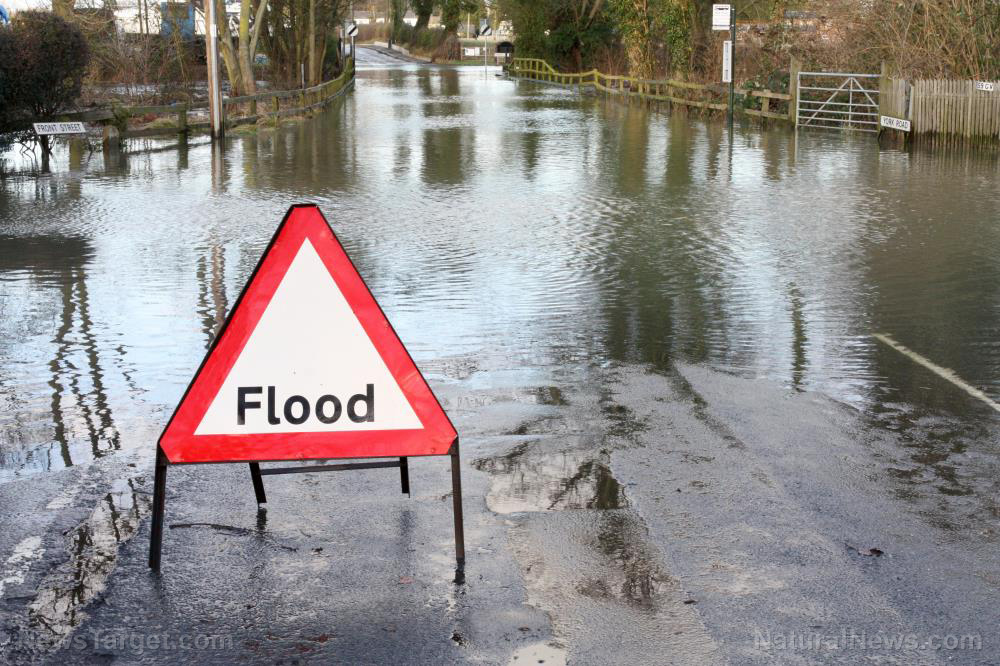How to get rid of your hazardous waist
07/19/2016 / By usafeaturesmedia

(USA Features) We all know being overweight is not good for us but recent findings indicate that if the fat is stored on your tummy, your health is seriously at risk.
If you’re serious about living to a ripe old age and staying healthy, your tape measure has just become your new best friend. There is a simple test to determine the shape you’re in and it has nothing to do with what you see in the mirror. Chunky thighs and bulging hips may have you sighing in dismay, but the real yardstick is the circumference of your waist.
If it’s below 80cm, you’re fine. If it’s between 80 and 88cm, you’re moving in the wrong direction and should take action. But if it’s above 88cm, you’re in trouble. You’ve hit the red zone. Real danger. And you need to seek professional help.
To understand the hype about having a tummy tyre, you need to know a little about abdominal fat and its dangers. There are two forms of fat. The first is subcutaneous fat, which sits immediately under the skin – in the arms, thighs buttocks and abdomen. It’s the kind of fat you’re at war with when you try to get into those tight jeans. The second type is visceral fat, which sits inside, directly around the organs, and has a different anatomy to subcutaneous fat.
In disease management, clinicians may worry about the amount of visceral fat you have around your organs because this is what makes you far more likely to suffer from serious chronic illnesses such as diabetes, hypertension and heart disease. In the past we believed that this fat used to sit there innocuously and inertly, but today we know this is not the case.

Studies of activity at cellular level have proved that not only does visceral fat negatively affect the normal functionality of organ cells but eventually kills them off. Also, fat cells have an inflammatory cross talk – if there is an inflammatory reaction in a fat cell, it is likely to create an inflammatory reaction elsewhere in the body.
Doctors agree that the major associated risks include:
- Heart Attacks
- Infertility
- Gout
- Depression
- Sleep Apnoea (breathing stops or becomes very shallow while sleeping)
- Polycystic Ovarian Syndrome
- Hormone Dependent Cancers, such as breast and uterine cancers
- Non alcoholic fatty liver disease, which can lead to cirrhosis of the liver, end stage liver disease and death.
So are we all prone to middle age spread? Almost certainly. But if you ask whether it’s inevitable, the definite answer is no. If you take preventive measures and you understand what happens to your body as you age, you can avoid it. But if you leave it until the day you enter menopause, it may be too late and you could be in trouble.
This is because certain hormonal changes take place in every woman’s life around menopause. One is the loss of the two main female hormones: oestrogen and progesterone. Both these have an action that protects muscle bulk in the body, which is what determines whether your metabolic rate is good or bad. Part of the menopausal package is the loss of these hormones, which leaves you wide open to middle age spread. In addition to menopause, other factors are at work to help pile on those lethal centimeters around your middle. Most of these are lifestyle based.
Our modern diet is characterized by excessive calorie intake, too many refined starches, sugars and undesirable hard fats and decreasing amounts of fresh fruit and vegetables. We also spend too much time sitting in front of computers, and watching TV. Dietary intake and a lack of exercise play a huge role in the tummy tyre problem and we need to take charge of the way we lead our lives, particularly as we get older, and make better lifestyle choices.
When you reach menopause, you’re living a completely different life to the one you led in your twenties and thirties. The chances are that you have more time on your hands – with no children around, there is more time for social lunches and business dinners and you are more likely to eat out more often. Too busy or too lazy to exercise and too lax to watch what you eat is inviting disaster.
The good news is that if you’re lucky and you haven’t developed a co-morbid disease associated with obesity, it’s possible to start afresh. And what you need to do first is get moving.
By Sandra Prior, Expert Articles.
More:
- HOW You Eat Is As Important To Your Fitness As WHAT You Eat
- 9 Advantages Women Can Gain Through Strength Training
- So, Turns Out Having A Little ‘Junk In The Trunk’ Means You’re Smarter AND Healthier: Study
Click here to have all USA Features Media sent to your inbox daily.
Submit a correction >>
Tagged Under:
belly fat, waist
This article may contain statements that reflect the opinion of the author






















